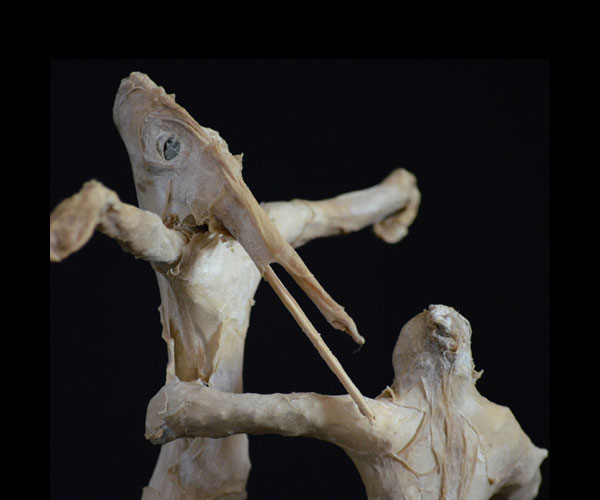A painter friend visited a cemetery in Egypt. She was walking with her family when she saw in the distance a robed woman who seemed to be throwing something from a bag on the desert floor. She hurried ahead and saw that this woman, amongst others, was tossing handfuls of ground pigment into a tomb, or maybe into several tombs. The pigment color, a dense, bright blue, was extraordinary against the muted neutral tones of the desert landscape. The photos she took show an open, domed beehive structure, a tholos tomb, the floor saturated with layers of this intense pigment, also with dried corn kernels. In one photo, a man stands to the side with a broom. At one point, he offered my friend the broom; for her to do some sweeping? Or perhaps for him to sweep for her? – she has no idea.
The history of the color is intriguing. It was developed around 2600 as an alternate pigment to the rare and expensive mineral lapis lazuli, made from sand, copper, and sodium-carbonate, CaCuSi4O10m, a testament to the skills of the chemists of antiquity who understood how to control the temperature needed for successful synthesis. Amazing too was its consistency over time until it was “lost” during the dark ages. Lost and found again, when in 2009 it was discovered that Egyptian blue shows exceptional luminescence (it has since been made into a crayon), indicating its possible use in imaging devices.
But here’s what really intrigues me: new research shows that Egyptian blue produces infra-red radiation like that used by TV remotes. In other words, when compressed into infinitesimally thin sheets and compressed, the infrared quality of Egyptian Blue makes it a communication device.
So, back to the modern Egyptian women spreading layers of artificial blue pigment embedded with corn kernels in desert tombs. Assuming my friend hasn’t happened on a performance piece, maybe we can consider this scene a ritual having to do with decorating a tomb as Pharaoh’s was decorated and also providing the dead with what it needs in the next world, in this case, the color blue, which we now consider a medium for communication. And isn’t this a universal desire, as witness, for example, my dog Bandit buried under a tree with his bowl.
I also like to think that in some cellular way, the ancient world understood that this exquisite color is capable of communicating through layers of existence.

